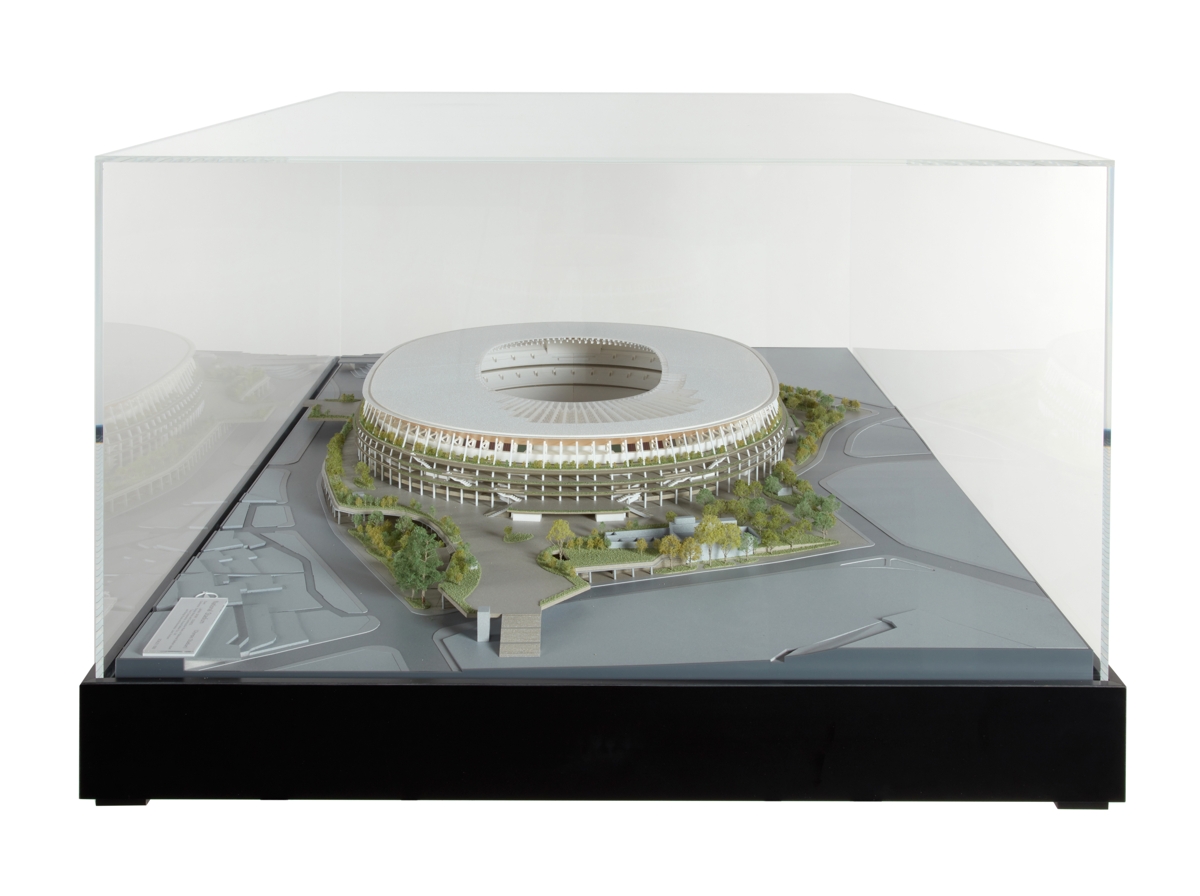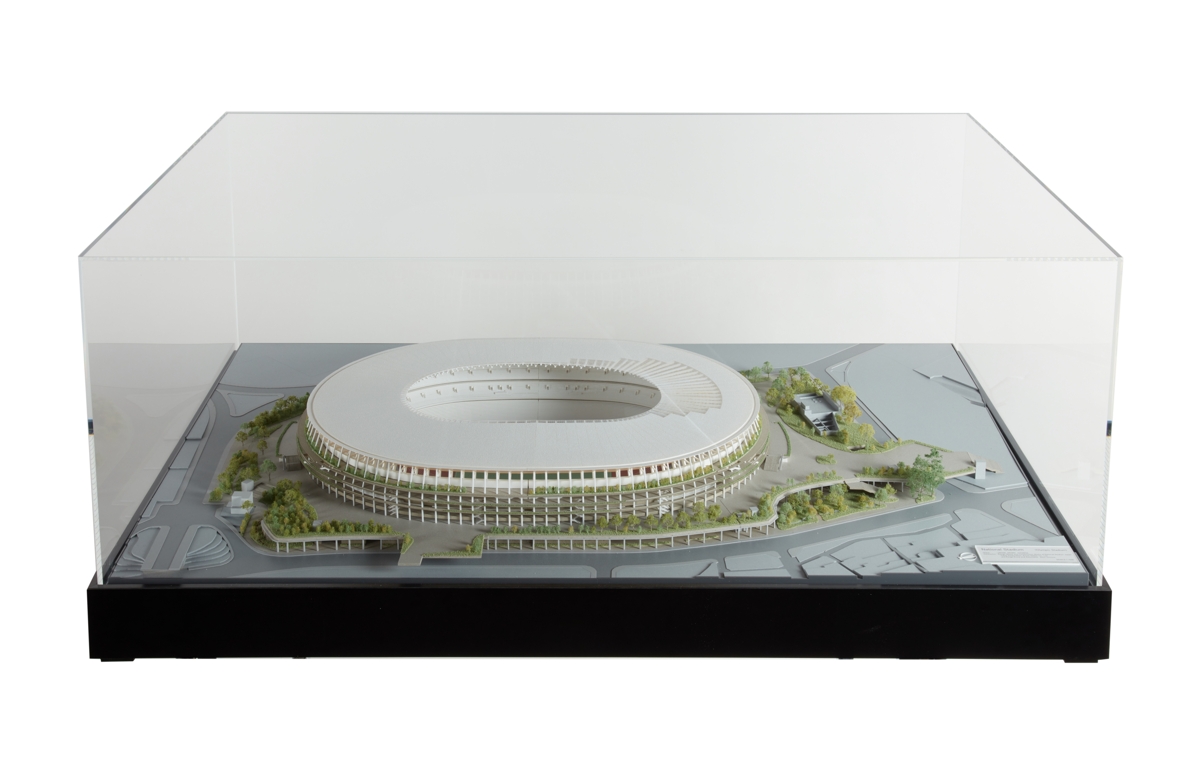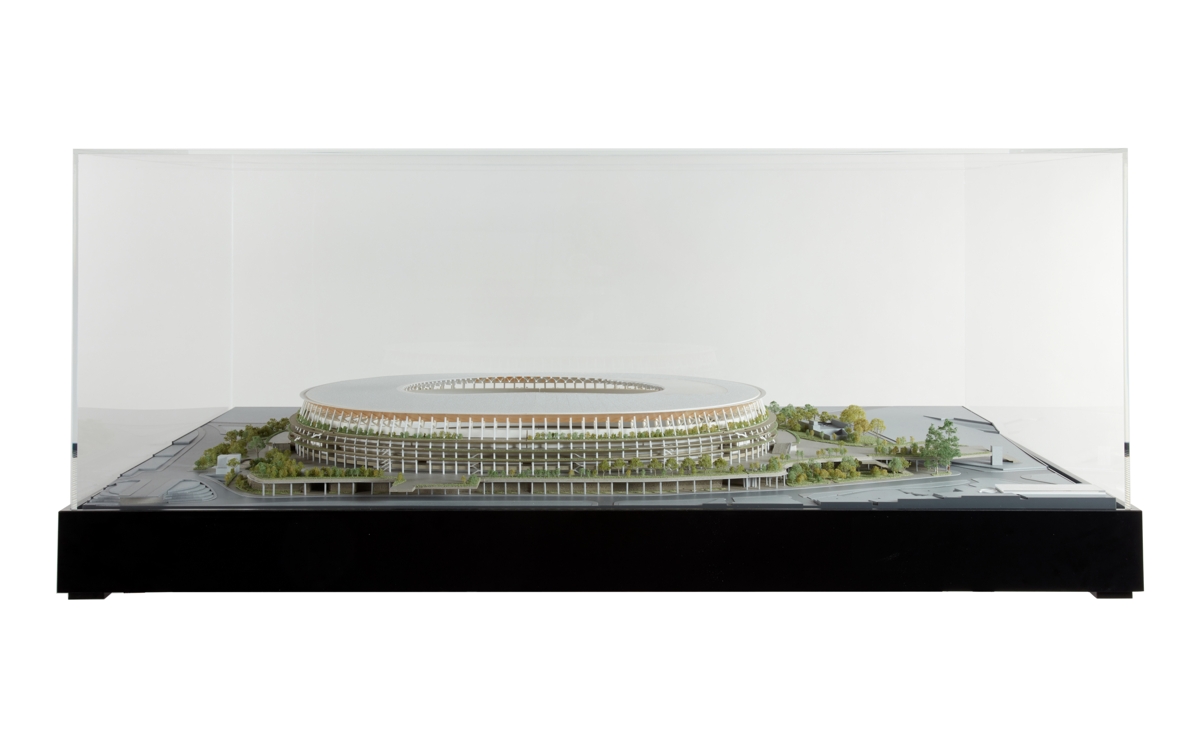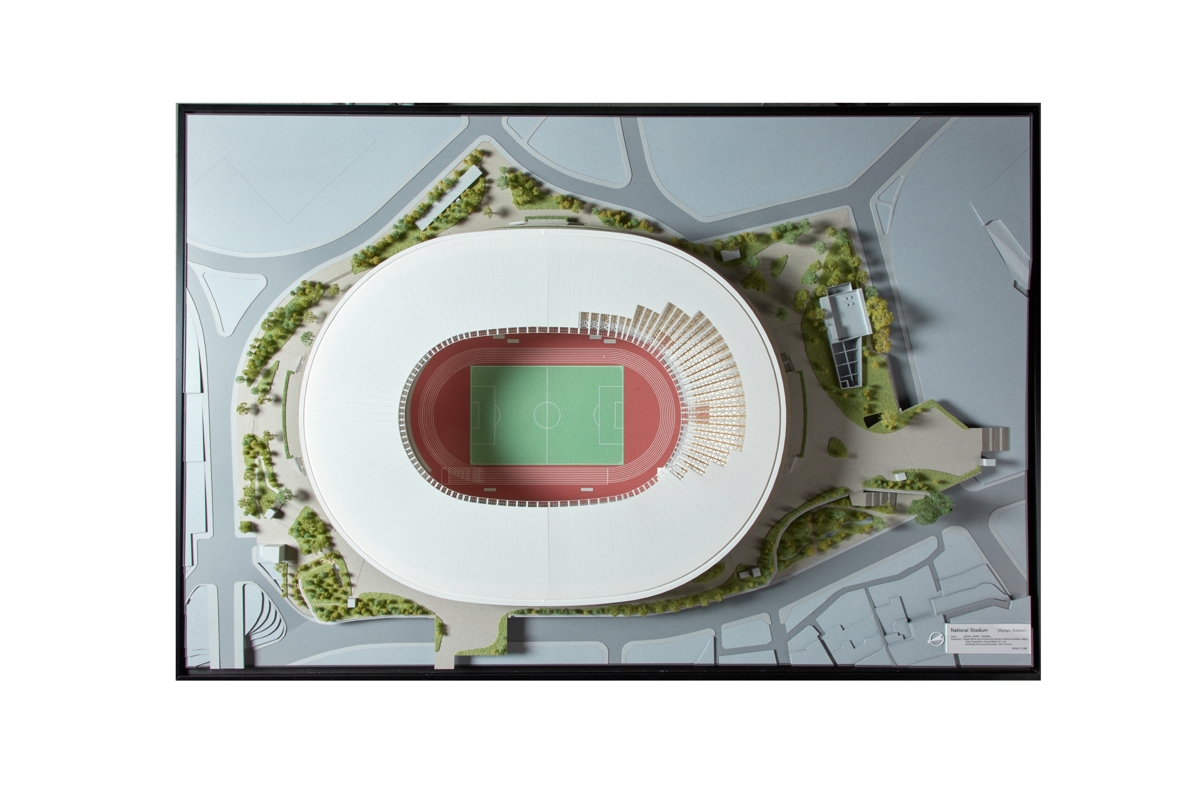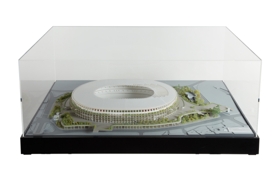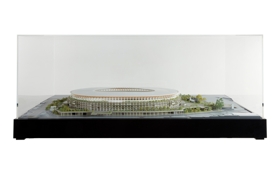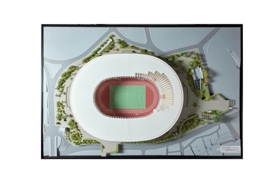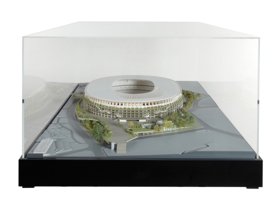Development: Taisei Corporation, Azusa Sekkei Co., Ltd., Kengo Kuma & Associates JV Construction: 3 years/2,400 workers Height: 49.2m Total surface area: 72,406 m2 Capacity: 68,000 spectators Use: In 2021, Opening and Closing Ceremonies of the Games, athletics events and certain football and rugby matches. After the Games: sports and cultural events. This stadium opens a new chapter in the history of sports architecture: this is the first time that wood has been used as the main building material. KUMA Kengo drew inspiration from Hôryûji, a huge cultural centre regarded as the source of Japanese arts and civilisation. The site includes the oldest wooden buildings in the world, in particular the 1,300-year-old Gojunto pagoda.
The architect used cedar and larch wood from 47 prefectures in Japan, particularly from the regions badly affected by the earthquake and tsunami in 2011. Each tier of the building has areas of vegetation, with a steel canopy forming the roof. KUMA says that he wanted to restore the link with nature that Tokyo had lost after the earthquake and tsunami in 1923, while also drawing on the legacy of the 1964 Games, for which architecture using concrete predominated. In his view, “it is possible to bring nature back to the city by combining new technology with traditional materials.”
